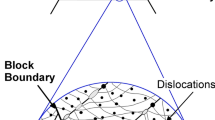Abstract
In the last decades, low-carbon soft‐martensitic stainless steels have been widely used by heavy industries such as hydraulic turbine and pipeline manufacturing. Their good corrosion resistance, high mechanical strength, and good cavitation erosion resistance combined with their relatively good weldability explain this success. However, arc welding operations of thick plates still require significant preheating to avoid cold cracking. From a practical point of view, this requirement can complicate manufacturing operations and limit the use of these alloys for some applications. It thus becomes important to assess their cold cracking susceptibility in order to reduce preheating temperature. The discrepancy between industrial observations in multipass welds and the results obtained from the standardized cold cracking test such as Tekken and GBOP (gapped bead-on-plate) tests led to a modification of the GBOP test as presented here. In order to reproduce the behavior of industrial cold cracks, a comparison between Tekken and GBOP tests was set up for the assessment of the cold cracking susceptibility of multipass 13%Cr‐4%Ni soft martensitic stainless steels welded with 410NiMo filler alloy. A two‐bead GBOP test was proposed. This modification is necessary because the low martensitic transformation temperature of the 13%Cr‐4%Ni stainless steels reverses the residual stress in the weld, preventing the possibility of cold cracking. A second bead is needed to induce tensile stress in the first bead so that crack may be generated as in industrial conditions. The relevance of these modifications is presented and discussed using contour method residual stress measurements and acoustic emission crack detection.











Similar content being viewed by others
References
Kromm A, Kannengiesser T (2011) Characterizing phase transformations of different LTT alloys and their effect on residual stresses and cold cracking. Weld World 55:48–56
Mabelly P, Bourges P, Pont G (2001) Effect of metallurgical transformations on weld residual stresses—application to E690 steel grade. Mar Struct 14:553–568
Zenitani S et al (2007) Development of new low transformation temperature welding consumable to prevent cold cracking in high strength steel welds. Science and Technology of Welding and Joining 12(6):516–523
Nitschke-Pagel T, Wohlfahrt H (2002) Residual stresses in welded joints—sources and consequences. Mater Sci Forum 404–407:215–221
Côté M, Etude des cinétiques de transformation de phase d’un acier inoxydable martensitique 13%chrome-4%nickel, 2007, Ecole de Technologie Supérieure (Canada): Canada
Kromm A et al (2011) Residual stresses in multilayer welds with defferent martensitic transformation temperatures analyzed by high-energy synchrotron diffraction. Mater Sci Forum 681:37–43
Kannengiesser T, Kromm A (2009) Formation of welding residual stresses in low transformation temperature materials. Soldagem Inspeçao 14(1):74–82
Kromm A (2011) Exploring the interaction of phase transformation and residual stress during welding by synchrotron diffraction, BAM Federal Institute for Materials Research and Testing: Berlin, Germany
Thibault D, Bocher P, Thomas M (2009) Residual stress and microstructure in welds of 13%Cr–4%Ni martensitic stainless steel. J Mater Process Technol 209(4):2195–2202
Thibault D et al (2010) Residual stress characterization in low transformation temperature 13%Cr–4%Ni stainless steel weld by neutron diffraction and the contour method. Mater Sci Eng A 527(23):6205–6210
Simoneau R, Thibault D, Fihey JL (2009) A comparison of residual stress in hammer peened, multipass steel welds A514 (S690Q) and S41500. Weld World 53(5/6):R1–R15
Godin S, Thibault D, Lévesque JB (2014) An experimental comparison of weld-induced residual stresses using different stainless steel filler metals commonly used for hydraulic turbines manufacturing and repair. Mater Sci Forum 768:628–635
Kasuya T et al (2012) Cold cracking susceptibility of austenitic and martensitic weld metals. Weld World 56:76–85
Matsuda F et al (1982) Effect of transformation expansion on restraint stress of weldment in relation to cold cracking of high strength steels. Trans JWRI 11(2):57–66
Aune R, Fostervol H, Akselsen OM (2003) Hydrogen assisted cracking in welding of 13 % Cr supermartensitic stainless steels. In 22nd International Conference on Offshore Mechanics and Arctic Engineering. Cancun, Mexico. p. 177–183
Francis JA et al (2009) The effects of filler metal transformation temperature on residual stresses in a high strength steel weld. J Press Vessel Technol 131(4):0414011–0414018
Schwenk C, Kannengiesse T, Rethmeier M (2009) Restraint conditions and welding residual stresses in self-restrained cold cracking tests. In Trends in Welding Research. p. 766–773
International Standard (2005) ISO17642-2 Destructive tests on welds in metallic materials—cold cracking tests for weldments—arc welding processes—Part 2: Self-restraint tests, International Standard: Swiss
American Welding Society, AWS B4.0 in Standard Methods for Mechanical Testing of Welds2007, American Welding Society: Miami, FL. p. 154
Pitrun M, Nolan D (2006) Susceptibility of low strength rutile flux-cored weld metal to hydrogen assisted cold cracking. Weld World 50(5):24–38
Chakravarti AP, Bala SR (1989) Evaluation of weld metal cold cracking using the G-BOP test. Welding Research, p. 1 s-8s
Davidson JL (1996) The hydrogen-induced cracking resistance of consumables for use in the fabrication of the COLLINS Class Subarines, Aeronautical and Maritime Research Laboratory: Australia
Prime MB (2001) Cross-sectional mapping of residual stresses by measuring the surface contour after a cut. J Eng Mater Technol 123:162–169
Acknowledgments
The authors would like to thank Mathieu Soares for the acoustic emission monitoring and Louis Mathieu for fruitful discussions. They extend their thanks to Alstom Power, Hydro-Québec, and the Natural Sciences and Engineering Research Council of Canada for financing this research.
Author information
Authors and Affiliations
Corresponding author
Additional information
Doc. IIW-2539, recommended for publication by Commission II “Arc Welding and Filler Metals”.
Rights and permissions
About this article
Cite this article
Paquin, M., Thibault, D., Bocher, P. et al. Assessment of cold cracking tests for low transformation temperature martensitic stainless steel multipass welds. Weld World 59, 521–532 (2015). https://doi.org/10.1007/s40194-015-0227-2
Received:
Accepted:
Published:
Issue Date:
DOI: https://doi.org/10.1007/s40194-015-0227-2




